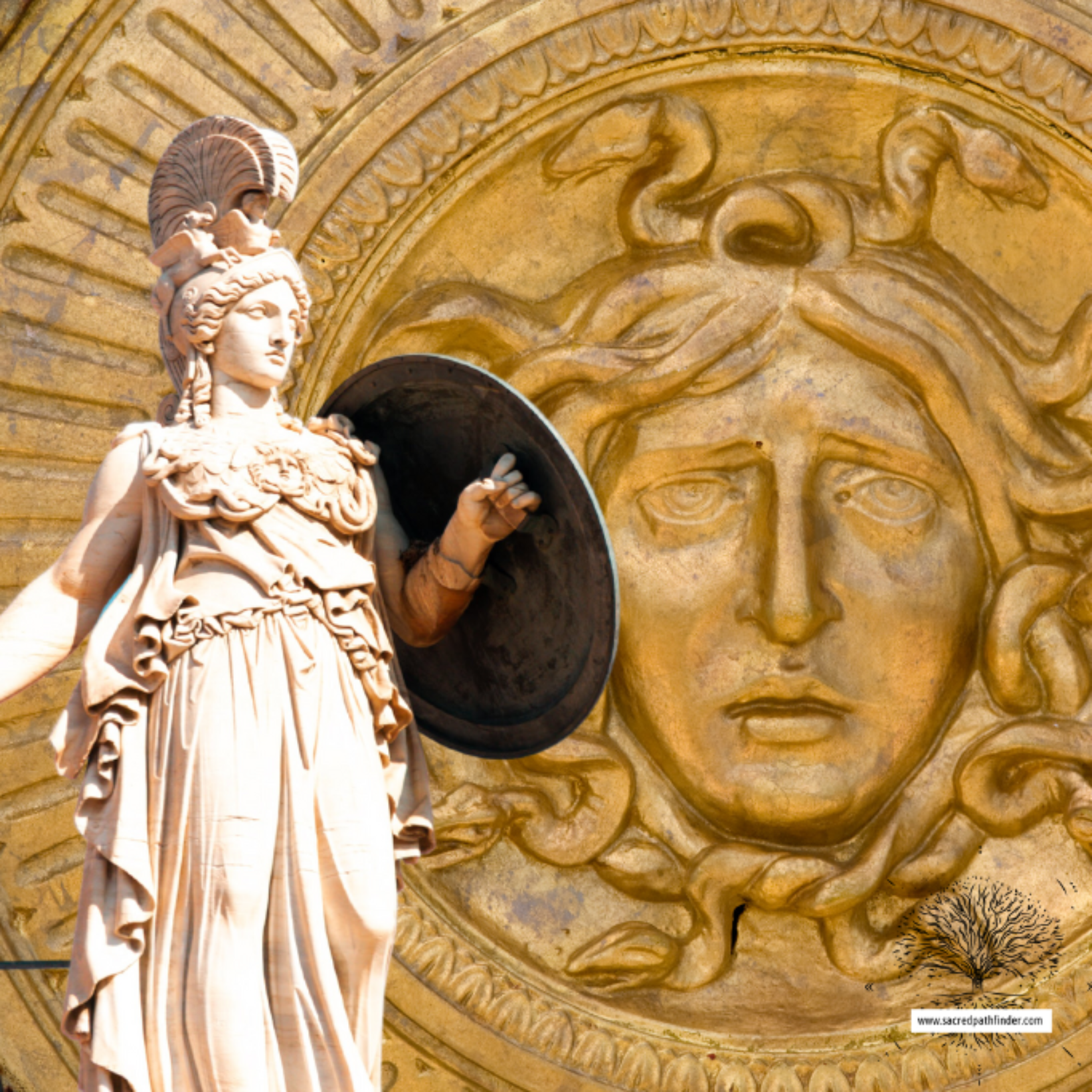Ancient symbols and meanings for strength and power have transcended language barriers throughout history. So-much-so, that they still evoke powerful emotions to this day.
In this article, we delve into the world of ancient symbols in Greek mythology and explore their meanings,
Join us on a journey through time as we explore these captivating symbols and unravel their profound significance.
Symbols Of Strength and Power In Greek Mythology
In Greek mythology, symbols and meanings for strength and power are deeply rooted in the legends of gods and goddesses, demigods, and heroes. Here are a few of our favorite symbols of strength and power in Greek legends.

Zeus and His Thunderbolt
Zeus, the king of the gods, wields the mighty thunderbolt as his symbol for strength and power.
This symbol represents Zeus’s dominion over the heavens and his unrivaled authority. The thunderbolt as Zeus’s symbol can be attributed to several key factors.
Firstly, the thunderbolt represents Zeus’s control over the forces of nature, particularly lightning, and thunder. Lightning, with its awe-inspiring display of energy and destructive power, embodies Zeus’s ability to harness and unleash immense strength.
Furthermore, the thunderbolt serves as a visual manifestation of Zeus’s divine wrath and judgment. When Zeus hurls his thunderbolt, it’s a symbol of his righteous anger and retribution against those who defy his authority. The thunderbolt becomes a symbol of divine justice, striking down evildoers and maintaining cosmic balance under Zeus’s watchful eye.
Lastly, the thunderbolt also conveys Zeus’s role as the protector and patron of heroes and warriors. Zeus bestows strength and courage upon those who fight for noble causes, helping them triumph over adversity.

Athena and the Aegis
The goddess Athena, known for her wisdom, strategic prowess, and patronage of warfare, is often depicted carrying the Aegis as a symbol of her power and strength. The Aegis is a shield adorned with the face of the monstrous Gorgon Medusa. It holds significant meaning in relation to Athena’s divine attributes.
The Aegis represents Athena’s ability to instill fear in her enemies and provide protection to those under her patronage. Medusa’s terrifying visage on the shield acts as a deterrent, turning adversaries to stone with her petrifying gaze. This symbolizes Athena’s ability to ward off threats, both physical and metaphysical, and safeguard her allies and favored mortals.
The Aegis also reflects Athena’s strategic brilliance in battle. The Gorgon’s head on the shield represents Athena’s strategic and tactical acumen, her ability to outmaneuver and outwit her opponents.
Athena wears the Aegis as a mark of her high status among the gods. It represents her role as mediator and protector of justice, as she dispenses wisdom and maintains order in both mortal and divine realms.
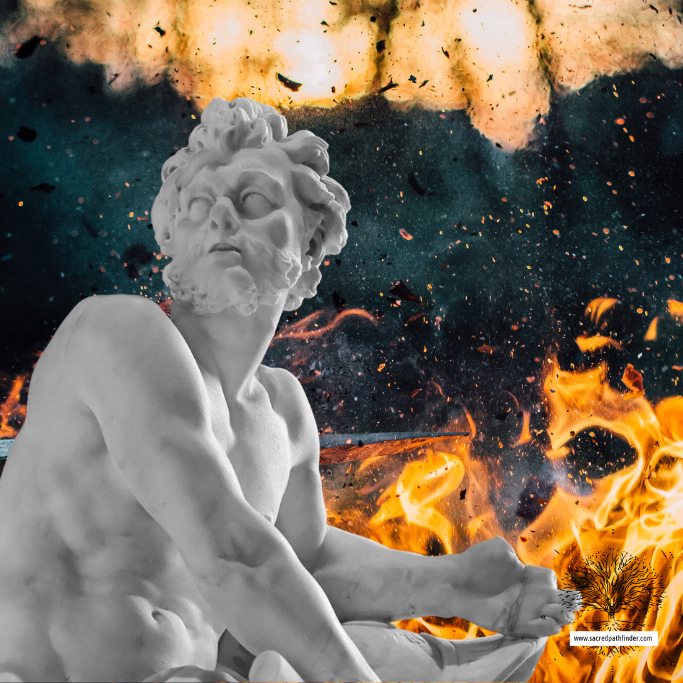
Hephestus and his Smith Hammer and Anvil
Hephaestus, the god of blacksmiths and craftsmen, is closely associated with the symbol of the smith’s hammer and anvil. This symbol holds deep significance in relation to Hephaestus’s power and strength. It represents his mastery over the art of forging and craftsmanship.
Hephaestus is exceptionally skilled in metalworking and his ability to shape raw materials into extraordinary creations. He possesses an unrivaled understanding of the transformative power of fire.
The hammer represents his strength and precision, allowing him to shape metal with precision and force.
The anvil symbolizes the foundation upon which his creations are forged, signifying Hephaestus’s stability and dedication to his craft.
Hephaestus’s forge is a place of intense heat and immense energy, where he breathes life into his creations. His works of art are known to withstand the tests of time.
Hephaestus’s craft requires resilience, perseverance, determination, and overcoming challenges, and the hammer and anvil are the perfect representation of that.
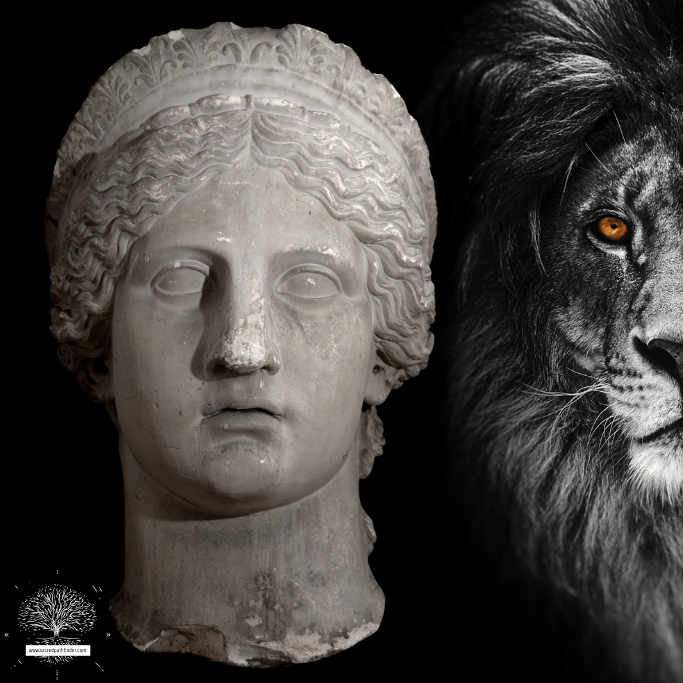
Hera and the Lion
Hera, the queen of the gods, and goddess of marriage and childbirth, is associated with the symbol of the lion.
The lion symbolizes Hera’s regal authority and her status as the queen of the gods. Just as the lion is regarded as the king of beasts, Hera asserts her dominion and power as the queen of Olympus. The lion represents her majestic presence and her unwavering command over the divine realm..
Furthermore, the lion embodies Hera’s protective qualities. Like a lioness fiercely guarding her pride, Hera safeguards the sanctity of marriage and family bonds. She is the patroness of married women, protecting their unions and ensuring the well-being of their children.
Moreover, the lion serves as a symbol of Hera’s ferocity and ability to defend her interests. When Hera faces threats to her authority, she exhibits a powerful and vengeful nature akin to the lion’s fierce roar.
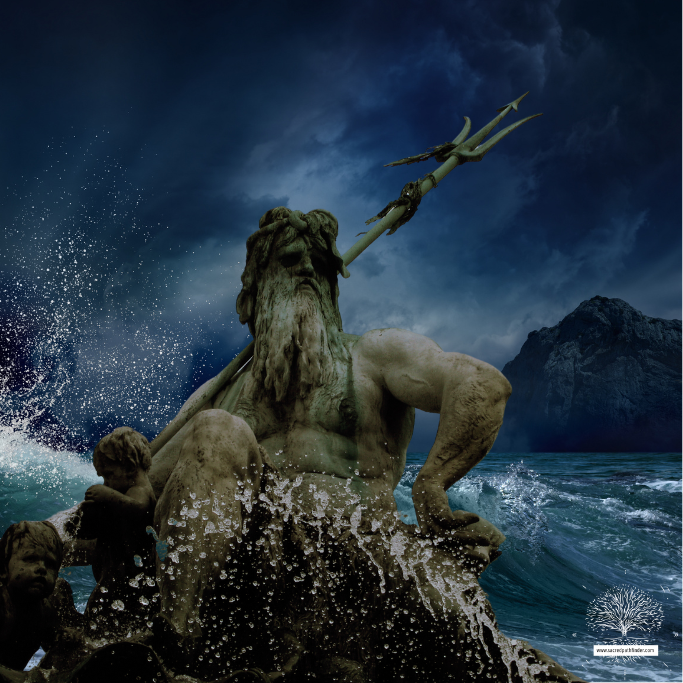
Poseidon and the Trident
Poseidon, the god of the sea and earthquakes, wields the trident as his symbol of power and strength.
The trident’s three-pronged shape symbolizes Poseidon’s dominion over the three realms of the sea: the surface, the depths, and the storms. With the trident, Poseidon can summon and calm tempestuous waters, control the ebb and flow of tides, and cause or suppress devastating earthquakes.
The three points of the trident represent the power to create, preserve, and destroy.
Poseidon has the power to shape coastlines, raise islands from the depths, and unleash powerful tidal waves. It reminds all of his role as the enforcer of justice, capable of punishing those who defy him with cataclysmic displays of his power (just ask Odysseus).
The trident also reflects Poseidon’s association with navigation and seafaring. Sailors would often seek Poseidon’s favor and protection on their journeys, as he held the power to calm or stir the seas. The trident became a symbol of hope and stability for those who relied on the sea for their livelihoods.
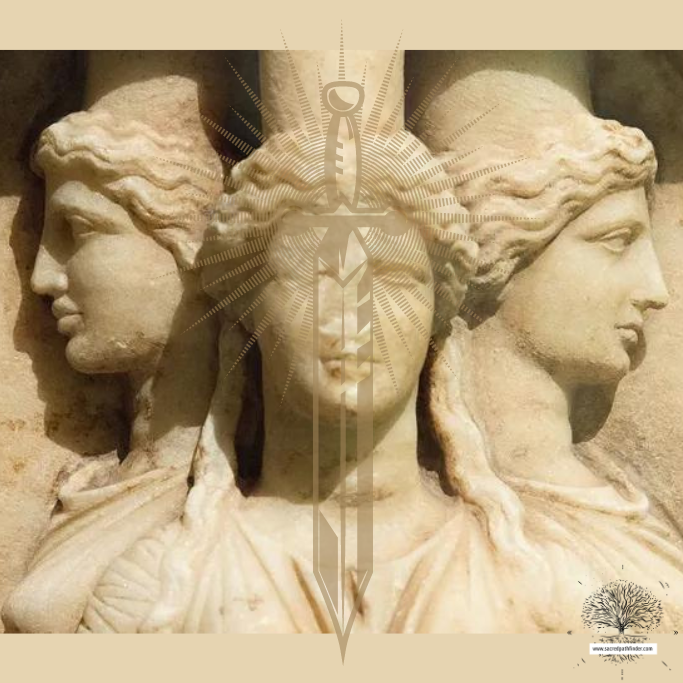
Hekate and her Dagger
Hekate, the goddess associated with magic, witchcraft, and crossroads, is depicted with a dagger as a symbol of her power and strength. The dagger holds profound significance, representing Hekate’s connection to the mystical realm, her role as a guardian, and her ability to navigate the liminal spaces between worlds.
The dagger symbolizes Hekate’s association with witchcraft and sorcery. This tool is commonly used in ritual practices and represents her ability to wield mystical forces and tap into the hidden realms of existence. It serves as a symbol of her power to shape and manipulate the energies of the supernatural world.
Furthermore, the dagger embodies Hekate’s role as a protector and guardian. In ancient Greek society, daggers were often carried for self-defense and protection. Hekate, as a goddess associated with crossroads, was believed to safeguard travelers and guide them through perilous paths.
The dagger also reflects Hekate’s connection to the liminal spaces. The crossroads, where different paths converge, are considered liminal spaces, representing moments of choice and transformation. Hekate possesses the ability to navigate these transitional phases of life. The dagger symbolizes her power to cut through boundaries to facilitate personal growth. This helps individuals navigate through pivotal moments and make transformative decisions.
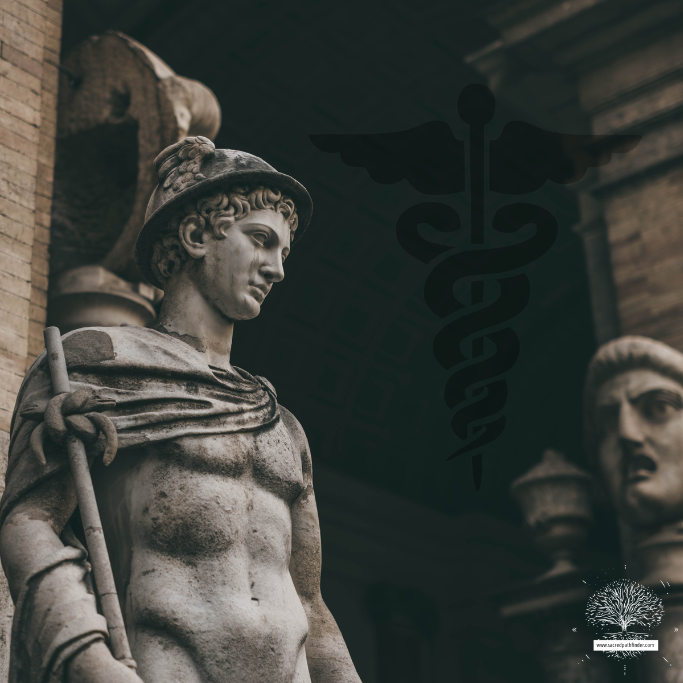
Hermes and the Caduceus
Hermes, the messenger of the gods and the god of travel, commerce, and boundaries, is closely associated with the Caduceus as a symbol of his power and strength.
The caduceus is a staff intertwined with two serpents and topped with a pair of wings. This symbolizes Hermes’ multifaceted nature and his ability to navigate between different realms. The serpents winding around the staff are often interpreted as representing duality and balance. This symbolizes Hermes’ role as a mediator between opposing forces. The wings at the top of the staff symbolize his swift and agile nature as the messenger of the gods, which enables him to traverse great distances quickly.
Moreover, the caduceus represents Hermes’ connection to commerce and trade. As the god of commerce and patron of merchants, Hermes facilitated business transactions and protected travelers on their journeys. The staff symbolizes his authority and protection over travelers and merchants, ensuring safe passage and successful trade.
Additionally, the caduceus is associated with healing and the restoration of balance. In some interpretations, the serpents on the caduceus represent the rejuvenating and transformative powers of healing. As the god of boundaries, Hermes had the ability to restore order and balance in various domains, including physical, mental, and spiritual realms. The staff, with its association with healing, represents his power to bring harmony and restore well-being.
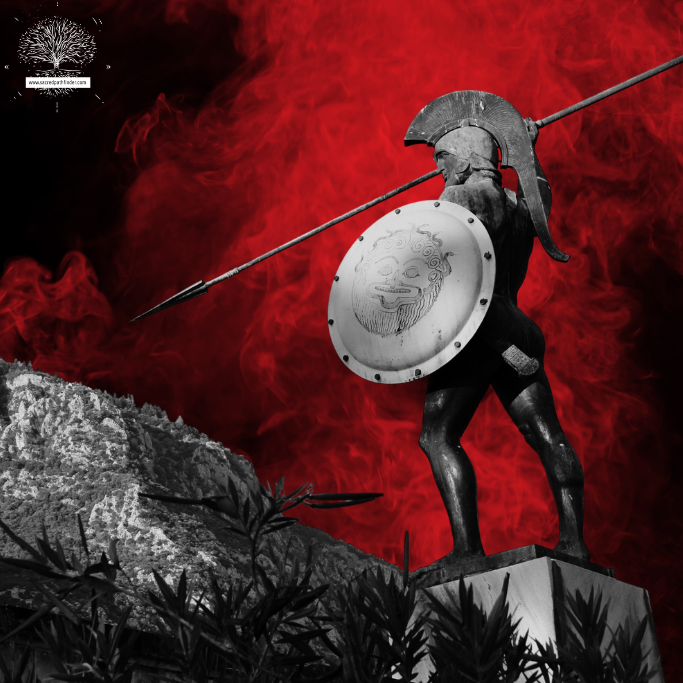
Achilles and his Armor
The legendary hero Achilles is not commonly associated with a specific symbol of power and strength. However, if we were to consider an emblem that represents his remarkable abilities and indomitable spirit, one could argue that his armor and shield serve as potent symbols.
Achilles’ armor, forged by the divine blacksmith Hephaestus, represents his invincibility and martial prowess. The intricate design and craftsmanship of the armor symbolize the divine intervention and favor bestowed upon Achilles. Each piece of the armor, from the helmet to the greaves, signifies his formidable strength and impenetrable defense in battle. The armor serves as a visual representation of Achilles’ legendary status as the greatest warrior of his time.
Similarly, Achilles’ shield holds great symbolic significance. According to the epic poem “The Iliad,” his shield depicted scenes of war, peace, and the cosmos. The shield’s design represented the entirety of the human experience, capturing both the splendor and brutality of life. The shield symbolizes Achilles’ profound understanding of the human condition, as well as his role as a tragic hero driven by glory and destiny. It embodies his unwavering resolve and serves as a constant reminder of his purpose on the battlefield.
While Achilles may not have a singular symbol of power and strength in the traditional sense, his armor and shield collectively encapsulate his exceptional abilities, divine protection, and legendary status as a warrior. These symbols signify his unmatched prowess in combat, his connection to the gods, and the profound impact he had on the Trojan War and Greek mythology as a whole.
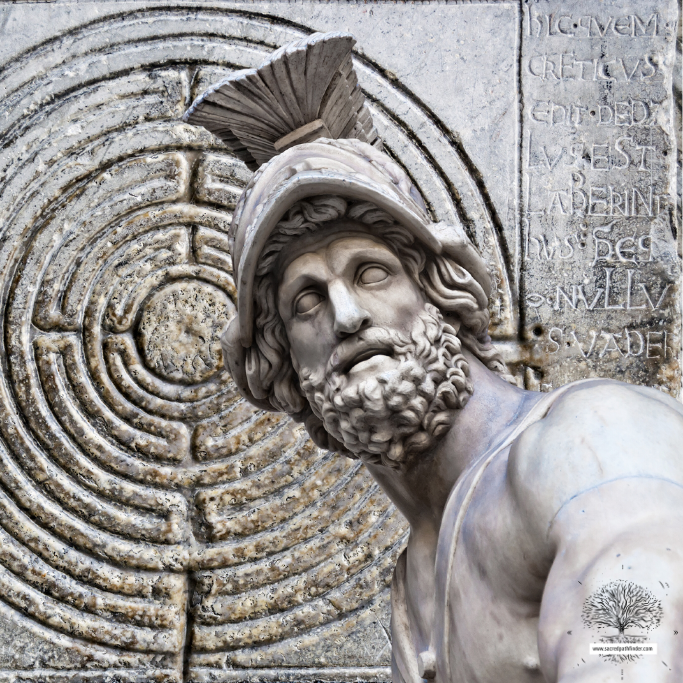
Theseus and the Labyrinth
The legendary hero Theseus is associated with a few symbols of power and strength, each representing different aspects of his heroic character and accomplishments.
One symbol closely associated with Theseus is the labyrinth. Theseus famously entered the labyrinth of Crete and successfully navigated its intricate passages to slay the fearsome Minotaur. The labyrinth symbolizes Theseus’ cunning, intelligence, and ability to overcome complex challenges. It represents his strategic thinking and problem-solving skills, as he devised a plan to navigate the labyrinth and emerge victorious. The labyrinth also signifies Theseus’ bravery and determination, as he faced the Minotaur, a monstrous creature, and emerged as a hero.
Another symbol associated with Theseus is the ball of thread. Before entering the labyrinth, Theseus was given a ball of thread by Princess Ariadne. He tied one end of the thread at the entrance and unraveled it as he ventured deeper into the maze. This allowed him to retrace his steps and find his way out. The ball of thread represents Theseus’ resourcefulness, guidance, and ability to find solutions in challenging situations. It symbolizes his capacity to navigate through complex and dangerous paths while maintaining a clear sense of direction.
In summary, Theseus is associated with symbols such as the labyrinth and the ball of thread, both representing different aspects of his power and strength. The labyrinth symbolizes his intelligence and ability to overcome challenges, and the ball of thread represents his resourcefulness and guidance. These symbols collectively embody Theseus’ heroic qualities, his determination, and his legendary status as a prominent figure in Greek mythology.

Circe and a Magic Wand
The enchanting goddess Circe is often associated with the symbol of the magic wand or staff as her emblem of power and strength. The wand represents Circe’s command over transformative magic and her ability to shape-shift and manipulate the world around her.
The wand symbolizes Circe’s profound knowledge of herbalism, potions, and spells. She uses this knowledge to transform humans into animals or manipulate their desires and perceptions. With a mere wave of her wand, Circe exercises control over the natural elements and shapes reality according to her will. The wand serves as a physical representation of her magical abilities and signifies her mastery over the mystical arts.
The wand also represents Circe’s autonomy and independence. Circe is depicted as a powerful sorceress who lives in seclusion on the island of Aeaea. Her isolation allows her to harness her magical powers without interference, embodying a sense of freedom and self-determination. The wand symbolizes her authority and self-sufficiency, as she wields it with confidence and uses it to exert her influence over others.
The wand is often associated with the concept of transformation and metamorphosis. Circe’s magic is known for its ability to alter the physical form and essence of beings. By wielding the wand, she becomes an agent of change, reshaping individuals and situations to suit her desires. This symbolizes Circe’s ability to transcend boundaries and reshape reality itself, making her a formidable and enigmatic figure in Greek mythology.
And if you’re looking for a captivating (and gripping) retelling of the life of Circe, check out Madeline Miller’s novel, Circe.
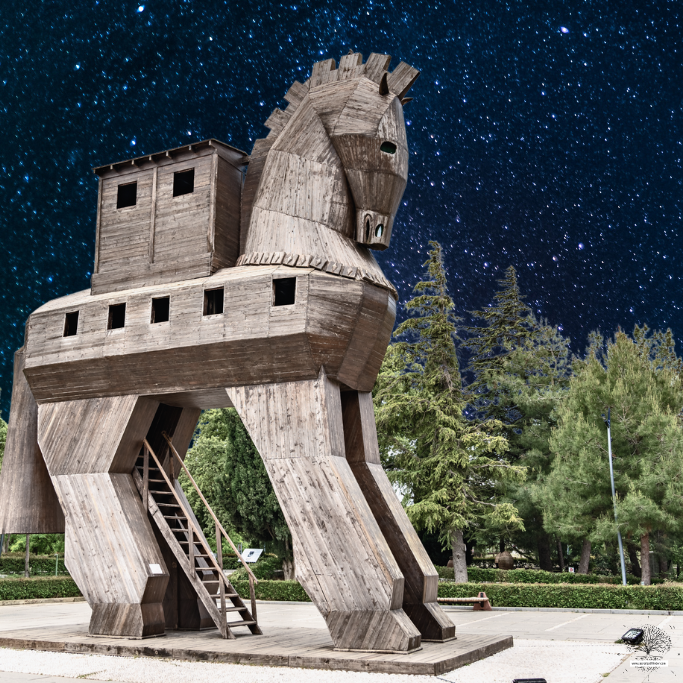
Odysseus and the Trojan Horse
Odysseus is a renowned hero known for his intelligence, cunning, and strategic thinking. The Trojan Horse is a symbol of power and strength for Odysseus due to its role in the famous Trojan War and the cunning strategy employed by the Greeks to conquer the city of Troy.
The Trojan Horse was a massive wooden horse presented as a gift to the Trojans by the Greeks. Unbeknownst to the Trojans, the hollow interior of the horse was filled with Greek soldiers. This ingenious plan was devised by Odysseus as a means to infiltrate the impenetrable walls of Troy and seize victory. The Trojan Horse symbolizes Odysseus’ intellect and tactical brilliance, demonstrating his ability to outsmart his enemies and overcome seemingly insurmountable obstacles.
The use of the Trojan Horse exemplifies Odysseus’ resourcefulness and strategic thinking. It represents his capacity to think outside the box and employ unconventional methods to achieve his goals. The Trojan Horse symbolizes not only the physical strength of the Greek army hidden within but also the psychological and strategic advantage it provided. It showcases Odysseus’ ability to exploit the weaknesses of his adversaries and secure victory through clever deception
Conclusion
From Zeus’s mighty thunderbolt to the cleverness of Odysseus’ Trojan Horse, these symbols carry profound significance and embody the timeless qualities of strength and power.
We invite you to join our community by subscribing to our newsletter, where you can discover more fascinating insights and engage in discussions about ancient symbols.
Share this article with your friends and let us know in the comments which other symbols and meanings from mythologies around the world you would like us to explore next.

